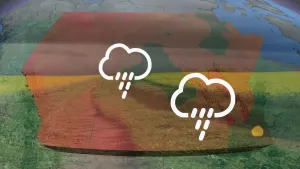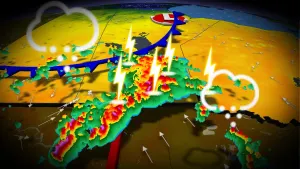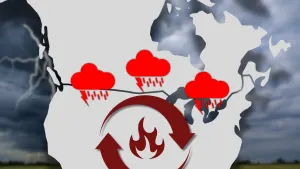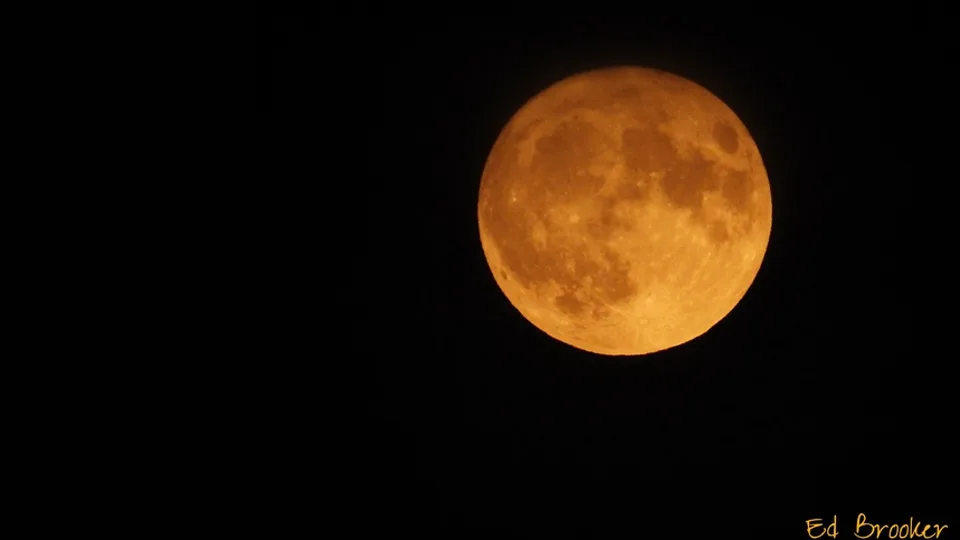
Eyes to the sky this weekend for the Full Hunter's Moon
The first Full Moon and the first meteor shower peak of Fall 2022 are happening on the same night.
Look up this weekend for the Full Hunter's Moon! If you're lucky, you may even spot streaks in the sky from three separate meteor showers!
Check your weather forecast for clear skies. The first Full Moon of Fall 2022 rises on Sunday night. That's not all there is to see, though. Saturn, Jupiter and Mars still shine brightly across the celestial sphere, and there are currently three active meteor showers — the Orionids and the southern Taurids are just getting started, and the Draconids are reaching their peak this weekend.
Visit our Complete Guide to Fall 2022 for an in-depth look at the Fall Forecast, tips to plan for it and much more!
Hunter's Moon?
Each Full Moon of the year has a popular name, taken from indigenous, Colonial American, and European folklore.
On September 10, we saw the Harvest Moon, so called because it is the Full Moon that occurs closest to the fall equinox. The Full Moon that follows — on Sunday, October 8 this year — is called the Hunter's Moon.
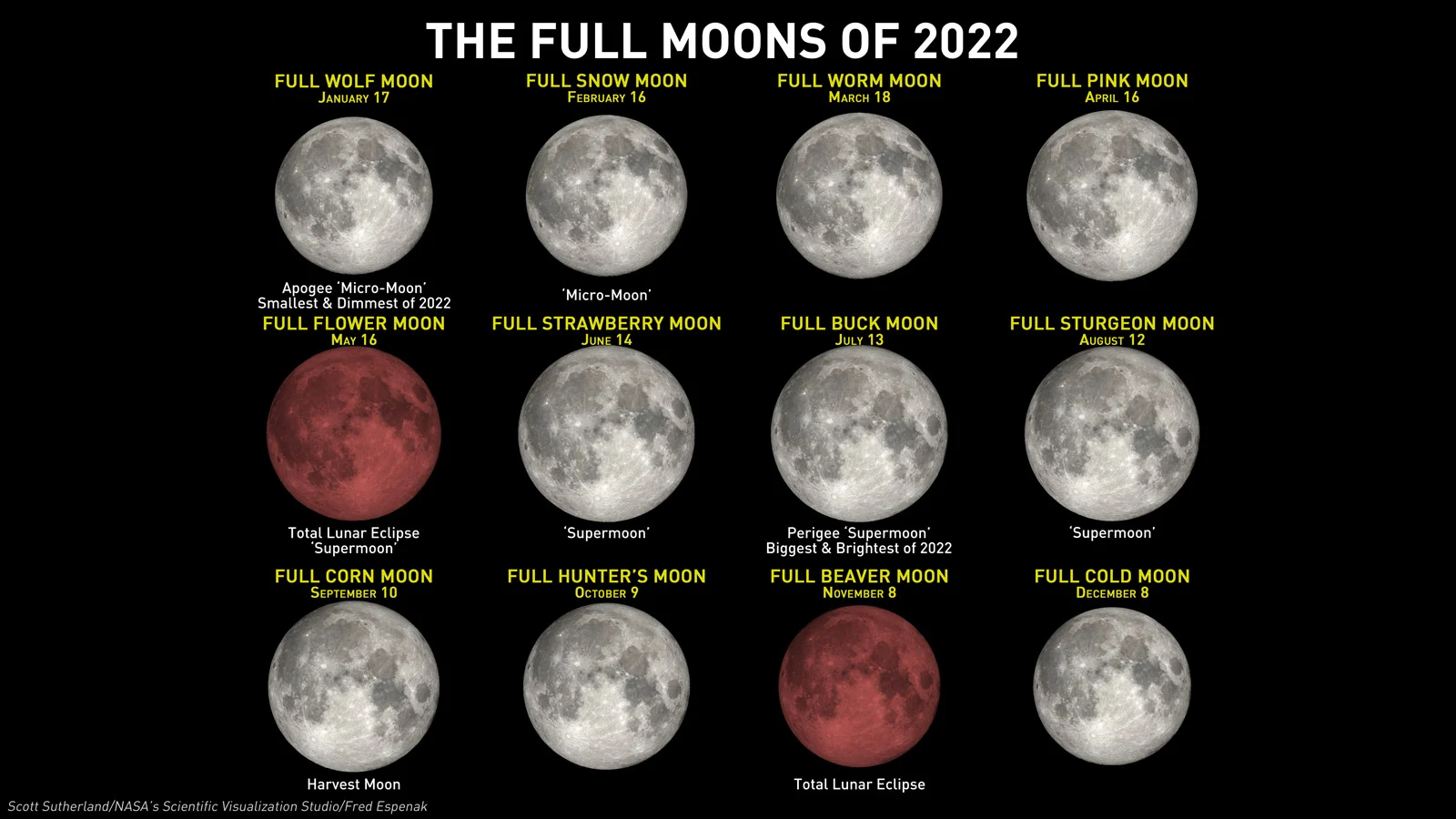
This graphic collects all the relevant data about each Full Moon of 2022, including their popular names, whether they are a 'super' or 'micro' Moon, a 'perigee' or 'apogee' Full Moon, and whether they are remarkable in some other way (Harvest Moon, or due to a lunar eclipse). Credit: Scott Sutherland/NASA's Scientific Visualization Studio/Fred Espenak
According to NASA, "The earliest written use of the term "Hunter's Moon" identified in the Oxford English Dictionary is from 1710."
The Old Farmer's Almanac says: "It is believed that this Full Moon came to be called the Full Hunter's Moon because it signalled the time to go hunting in preparation for the cold winter ahead."
Many First Nations peoples tracked the passage of time throughout a year using a lunar calendar. Similar to how the months of the solar year are named (January, February, etc), each 28-day cycle of lunar phases was given a name, based on some aspect of nature or their culture. Today, some of these names are used for the Full Moons.
Canada has hundreds of First Nations groups, but for some notable ones: the Mi'kmaq call this Wikewiku's, or the 'Animal Fattening Moon'. To the Anishinaabe it is Binaakwe-giizi, or the 'Falling Leaves Moon'. Some Ojibwe also call it Binaakwe-giizi, but for others, that is their name for the September Moon and they call this one Mshkawaji-giizi, the 'Freezing Moon'. To the Cree it's Pimahâmowipîsim, or the 'Migrating Moon', denoting when birds begin to migrate south. For the Mohawk people, it is Kenténha, which means 'some poverty in nature', when food begins to become more scarce as winter approaches. The Algonquin call it Namegos Kìzis or the 'Trout Moon'.
Look up and look around
The Full Moon isn't the only thing to look at in the sky right now. Even if you're trapped under urban light pollution, there are still a few things to see besides the Moon.
Jupiter is exceptionally bright these days — the brightest it's been in nearly 60 years, in fact! It should appear as the brightest object in the sky, besides the Full Moon.
Look off to the west/right of Jupiter, and you may spot Saturn. To the east/left of Jupiter, red Mars hangs out.
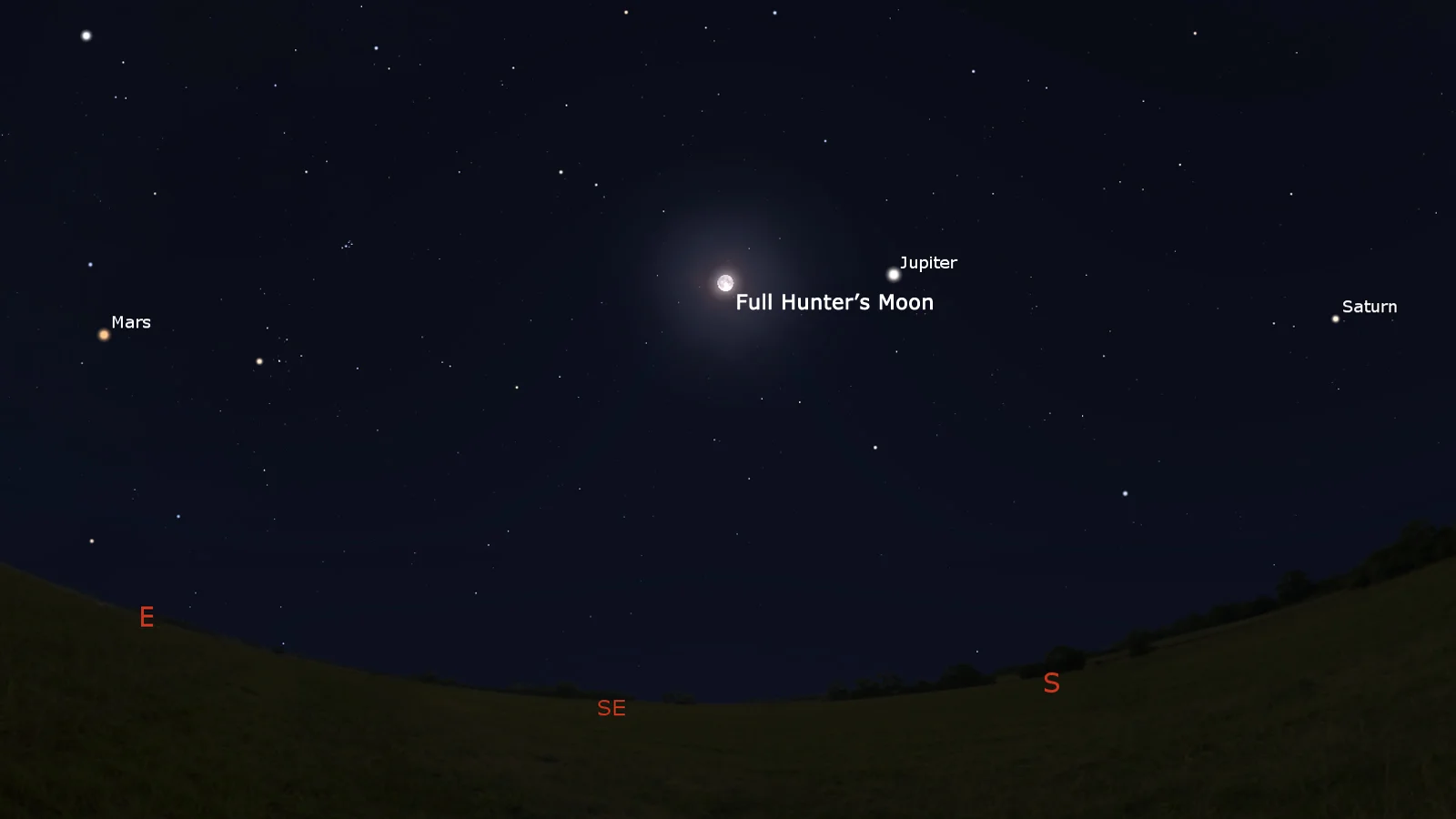
The Full Hunter's Moon hangs out with three bright planets on October 9, 2022. Credit: Stellarium/Scott Sutherland
Also, while the light from the Full Moon will make viewing a bit more challenging, there are currently three active meteor showers sending streaks of light across the night sky.
The southern Taurids meteor shower has been active since early September, and it reaches its peak either next week or a few weeks from now, depending on who you ask.
The Orionids meteor shower — one of two showers produced by Halley's Comet — just started at the beginning of October and doesn't peak until the 21st.
Coincidentally, the Draconids meteor shower peaks this weekend, just one night before the Full Moon.
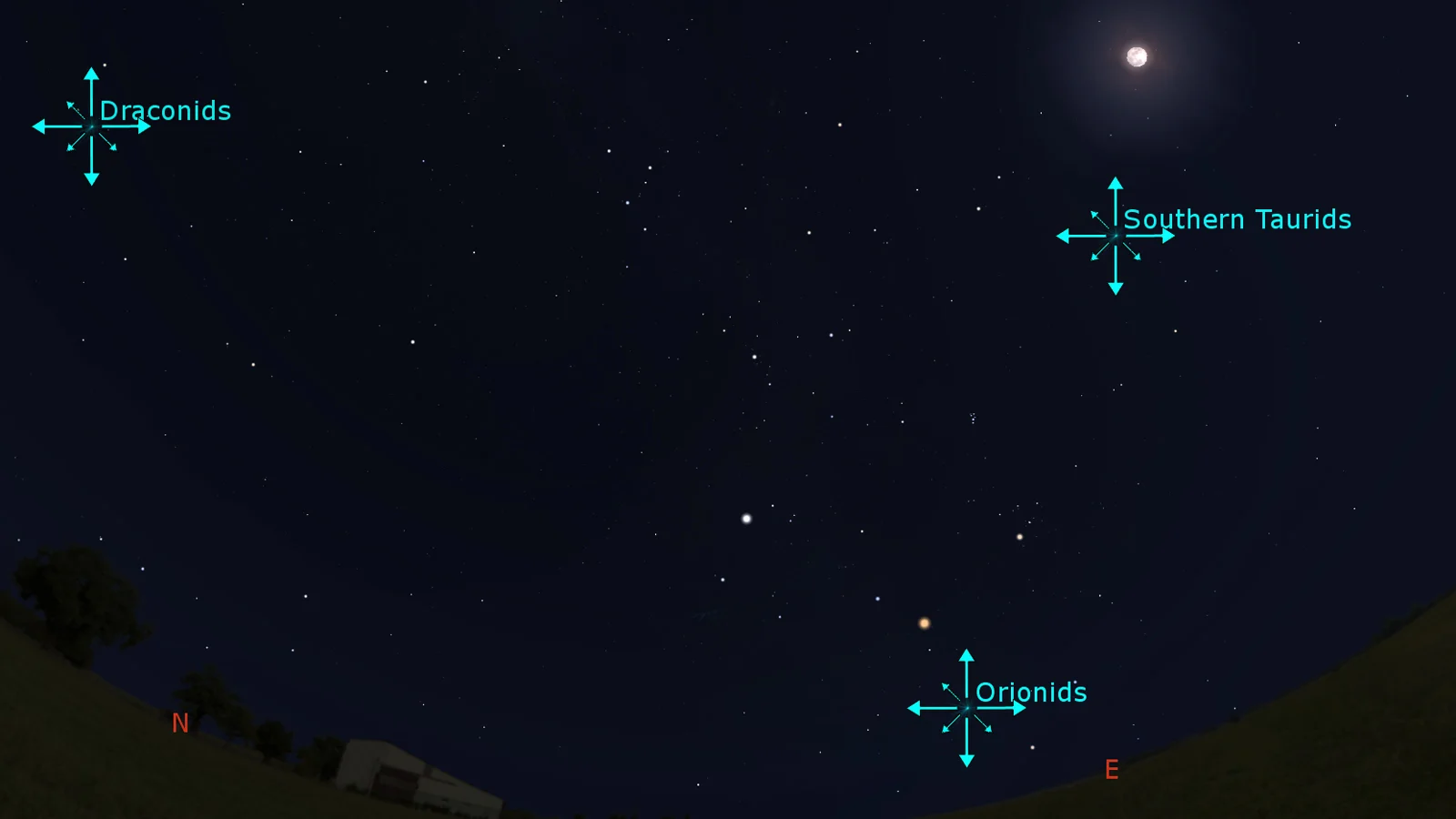
The three active meteor showers during the Full Hunter's Moon. Credit: Stellarium/Scott Sutherland
Of these three, the Orionids are the strongest, producing up to 20 meteors per hour at its peak. It will be much weaker now, though, at its start. The other two only produce about half that number at their peaks.
Still, if you can get somewhere under clear, dark skies, and keep your back to the Full Moon, you may spot some of these meteors.
The Amazing Moon Illusion
You step outside just after sunset, and there, looming above the horizon is a Full Moon that looks absolutely enormous! You snap a picture or two with your cell phone, and something doesn't quite look right... the Moon actually looks smaller on the phone's screen. Later, around midnight, you spot the Moon again, high above your head, and it definitely looks smaller than it did earlier.
So, what's going on?
This is not something the Moon, itself, is doing. In fact, for an observer on Earth's surface, watching at moonrise, the Moon is actually more than 6,400 km farther away from them compared to when it's directly overhead at midnight.
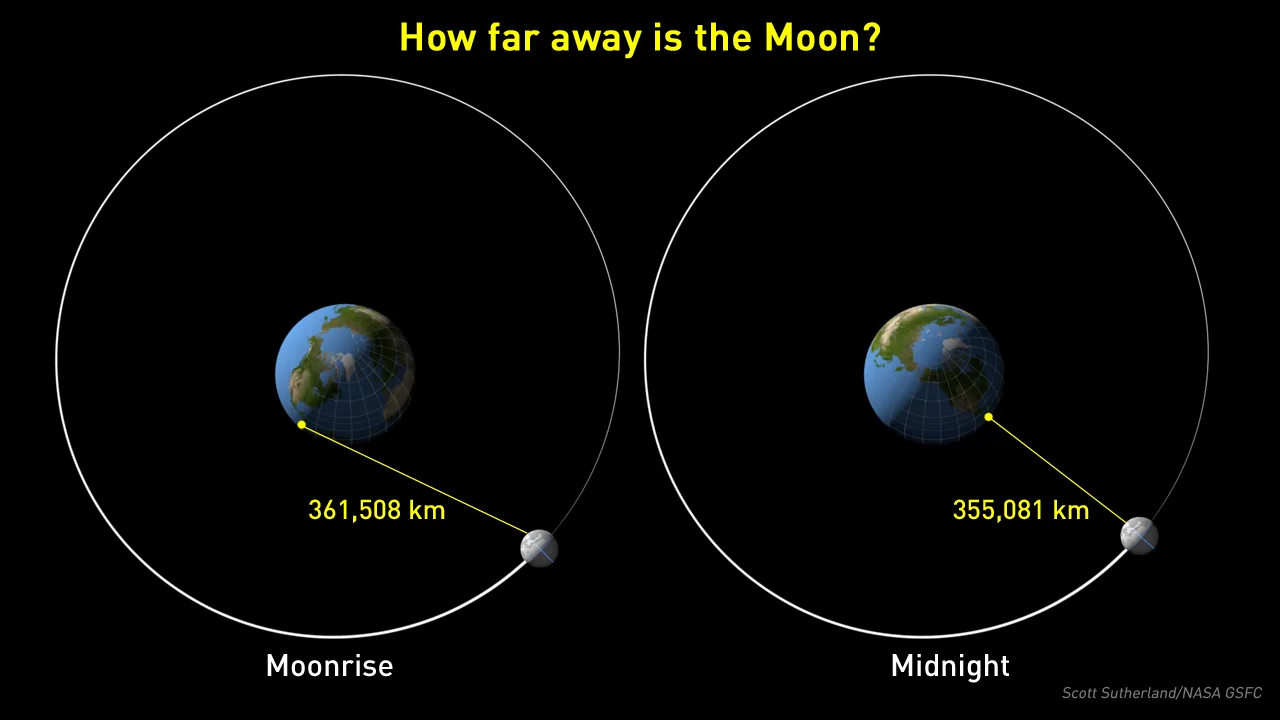
This graphic shows the distance between an observer on Earth's surface at moonrise vs midnight. Credit: Scott Sutherland/NASA's Goddard Space Flight Center
Instead, the apparent change in size of the Moon between when it rises and when it's overhead is due to a trick of our mind known as The Moon Illusion.
There are times when the Moon actually does look bigger, such as during a supermoon, when the Moon is physically thousands of kilometres closer to Earth than usual. Other times, though, we just think the Moon looks larger.
As our eyes take in the world around us, our brain knows from experience that objects close to us tend to appear larger and in focus. In contrast, distant objects tend to be tiny and blurry. From this, it also knows that for a distant object to appear in focus, it must be very large.

This close-up of the Harvest Moon was snapped in Calgary, AB, on September 13, 2019. Credit: Siv Heang
So, when we see a bright Full Moon hanging crisp and clear in the sky above the horizon, it is contrasted by all of the objects on the ground, which appear smaller and blurrier the closer they are to the horizon. This combination confuses the brain.
So, to compensate, the brain interprets the Full Moon as being much bigger than it truly is. To be clear, the Moon is certainly much larger than any of the objects on the horizon (it's 3,474 km across), but this 'illusion' gives us the impression that the Moon looks enormous!
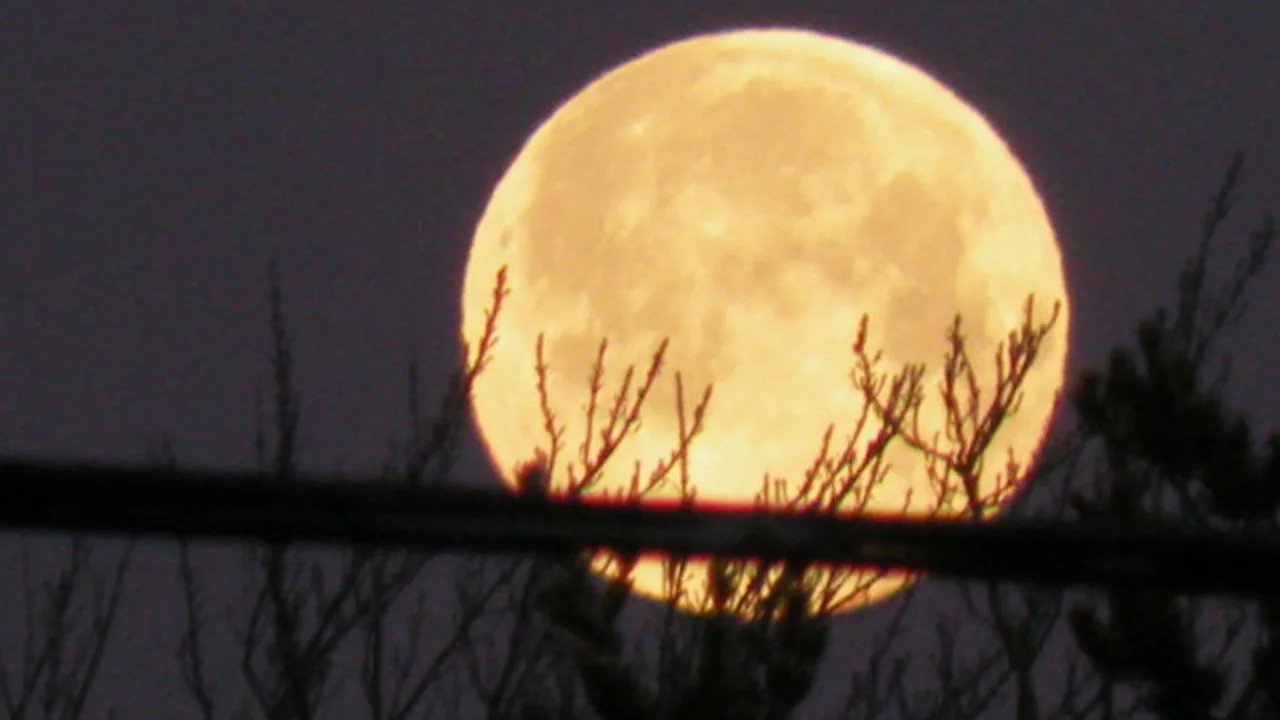
This zoomed-in image of the Full Moon was captured from Salisbury, NB, on February 9, 2020, and uploaded into the Weather Network's UGC gallery. Credit: Darlene MacLeod/Smith
Look again when the Moon is high above our heads and it will seem smaller. Since there's nothing right next to it in our field of view for our brain to compare it with, we see it's 'true' size.
We have a few tricks of our own that can cancel out the Moon illusion, though.
For the first one, we don't need technology. Just go outside after sunset and find the Moon near the horizon. Stretch your arm towards it, and cover the Moon with your thumb or even your pinky finger. Note how big the Moon looks compared to the digit in question, and keep that in mind. Maybe even take a picture of it, if you want. Later in the night, check out the Moon again when it is high in the sky. It may appear smaller than when you saw it earlier, but repeat the step to cover it with your thumb or finger. Compare it with what you saw before, and you'll find that the Moon is actually precisely the same size at both times.
There is a way technology can help us, though. When the Moon is low on the horizon, take out your cell phone, turn your camera on, and point it at the Moon.
Note: it is possible for the Moon illusion to still work on us when looking at a picture or video. This is because the brain will make the same judgments of distance, blurriness, and size as it did when looking at a 'live' scene.
Still, directly comparing what we see in the sky at that time to what is shown on our small cell phone screen can help put things into better perspective. Plus, you can also take a few pictures to upload into the Weather Network UGC Gallery while you're at it!








